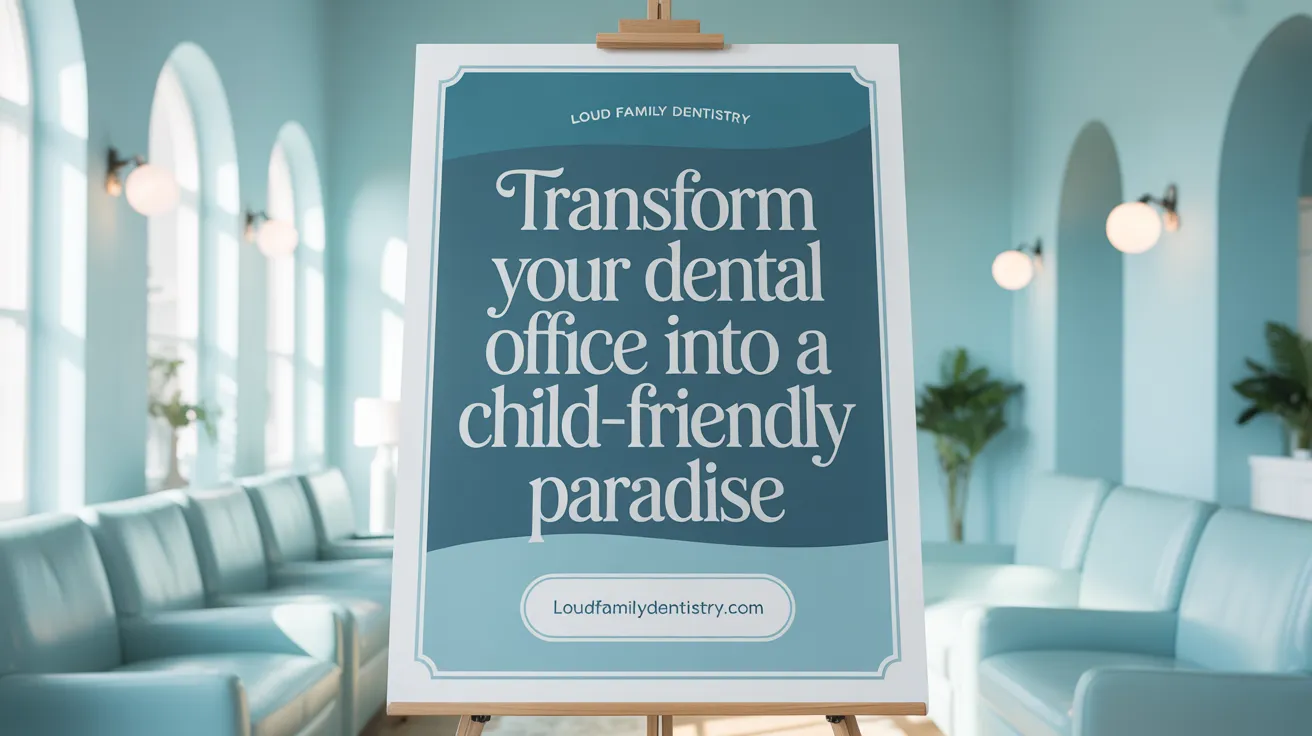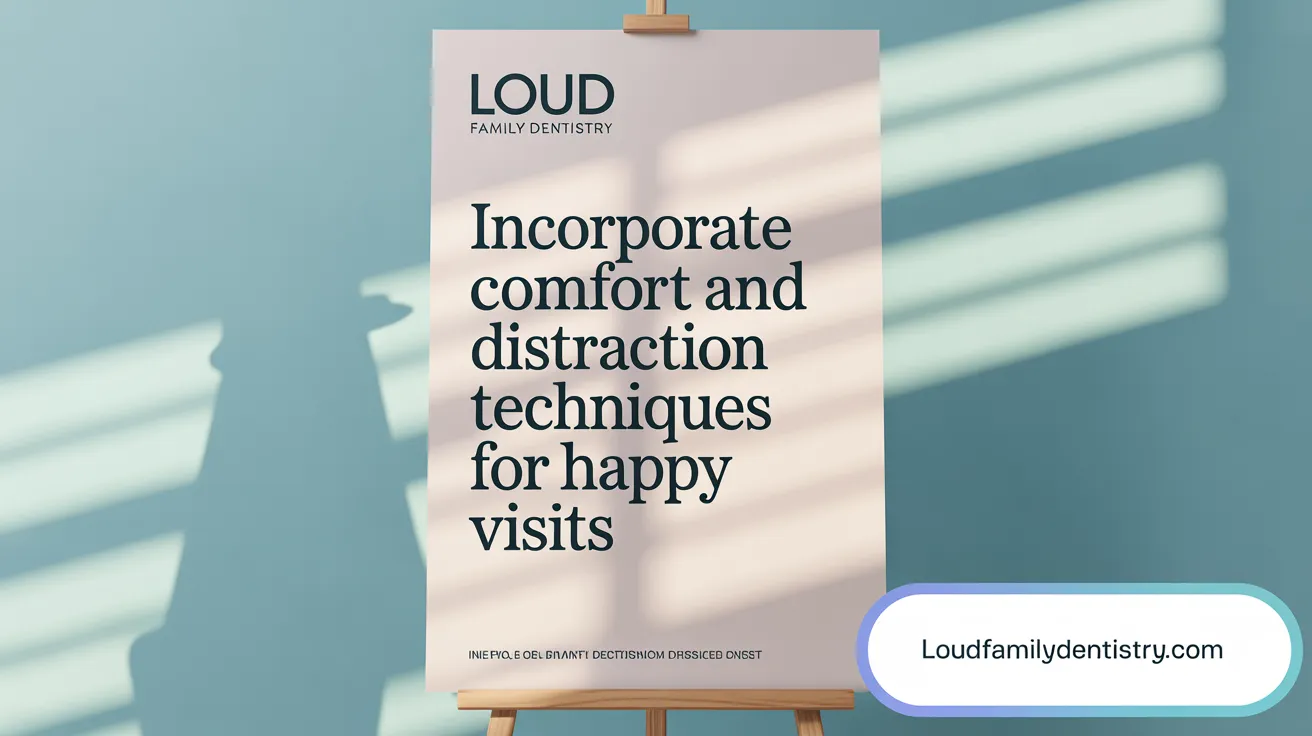A Gentle Approach to Caring for Young Smiles
Establishing a positive dental experience for children is crucial in promoting lifelong oral health. Pediatric dentistry isn’t just about treating teeth—it’s about creating a welcoming, safe, and engaging environment that helps children overcome fears and fosters healthy habits early on. This article explores how pediatric dental practices design child-friendly environments, implement behavior guidance techniques, and focus on educational, interactive experiences to make dental visits enjoyable and stress-free for children.
Designing a Vibrant, Engaging Environment to Ease Dental Anxiety

Why Is Child-Friendly Decor Important in Dental Offices?
Creating a welcoming and colorful environment in pediatric dental offices is essential to help reduce children's fears and anxiety. Bright, playful decor transforms the dental clinic from a potentially scary place into a fun and inviting space. This positive atmosphere encourages children to associate dental visits with comfort and enjoyment, fostering lifelong good oral health habits.
How Do Bright Colors and Playful Themes Help?
Colors like yellow, blue, orange, and pink evoke feelings of happiness, excitement, and calmness in children. Strategically placed bright accents and themed decorations help redirect children's attention away from dental procedures, reducing fear and nervousness. For example, cartoon murals or themed wall art create a sense of familiarity and curiosity, making the dental visit feel more like an adventure than a medical appointment.
What Role Do Interactive Play Areas and Distractions Play?
Interactive play zones with toys, books, puzzles, and games provide engaging distractions while children wait. Entertainment options such as TVs playing cartoons or music further ease anxiety by keeping children occupied in a positive way. These distractions promote creativity and social interaction, helping children feel secure and less focused on any upcoming procedures.
How Does Child-Sized Furniture and Office Layout Contribute?
Providing child-sized chairs, bean bags, and low tables ensures physical comfort for young patients, helping them feel accommodated and safe. A thoughtfully designed office layout with accessible spaces fosters a relaxed environment. Bright, comfortable waiting rooms combined with easy-to-navigate treatment areas show children that the dental office is specifically designed with their needs in mind.
Why Are Scented and Calming Elements Used?
Scented environments, especially with essential oils like lavender, have been shown to reduce anxiety in children by promoting relaxation. Calming features such as soft LED lighting and soothing sounds create a spa-like atmosphere that further diminishes stress levels. Incorporating these sensory elements enhances comfort and helps children associate the dental office with peaceful, positive feelings.
Specialized Communication and Behavior Guidance Techniques
Using Child-Friendly Language and Simple Explanations
Effective communication in pediatric dentistry begins with speaking in terms children can easily understand. Dentists use simple, friendly words, like calling a suction tool a "straw" or a water sprayer a "squirt gun", to make procedures less intimidating. This approach helps build trust and eases children's anxiety by making the environment familiar (Effective communication techniques).
Tell-Show-Do and Ask-Tell-Ask Methods
These behavioral guidance techniques help children anticipate dental procedures in a controlled and reassuring way. The "tell-show-do method" involves explaining the procedure, demonstrating it on a model or the child's finger, then performing it. The "ask-tell-ask method" involves asking the child about their feelings or understanding, telling them about the procedure using child-friendly terms, then asking again to confirm comprehension.
Positive Reinforcement and Rewards
Encouragement through praise, stickers, toys, or certificates plays a crucial role in promoting cooperative behavior. "Positive reinforcement" motivates children to overcome fear, participate actively during visits, and maintain positive attitudes toward dental care (Positive reinforcement for behavior guidance.
Hand Signal Communication Systems
To give children a sense of control during procedures, some dentists use "hand signals" to allow patients to communicate discomfort or need for a break without verbal interruption. This nonverbal communication supports a safe and calm treatment experience (Nonverbal communication with children.
Nitrous Oxide Sedation and Anxiety Management
For children with higher dental anxiety, "nitrous oxide" (laughing gas) provides a safe, rapid, and reversible sedation method. It helps reduce stress, pain perception, and facilitates cooperation, making dental visits more comfortable without full sedation risks (Sedation techniques for children.
These specialized communication and behavior management strategies combine to create a supportive, child-centered dental experience that fosters trust, reduces fear, and encourages lifelong oral health habits (child-friendly dental environment).
Empowering Through Education and Interactive Activities
Interactive Consultations with Toys and Dental Models
Pediatric dental offices often use toys and games in dental clinics and interactive play areas in dental clinics to engage children during consultations. These tools help children visualize and understand their oral health in a hands-on way, making the learning process fun and less intimidating.
Use of Themed Storybooks and Videos
Storybooks and videos tailored for children introduce dental concepts through stories and characters. This approach creates a narrative that children can relate to, helping ease anxiety and make oral health education enjoyable, as seen in educational dental activities for children and using child-friendly language in dentistry.
Playful Oral Health Education During Wait Times
Waiting areas often feature interactive play spaces with games and activities focused on dental care and kid-friendly waiting area features. These areas keep children entertained and reinforce good habits before their appointment begins.
Involving Children in Their Treatment Process
Dentists encourage children to participate in their own care by explaining procedures using child-friendly language and demonstrating steps with props. This involvement gives kids a sense of control and reduces fear during treatments as part of an approach to children's dental care.
Promoting Positive Habits Through Engaging Demonstrations
Dental professionals use playful demonstrations to show proper brushing and flossing techniques, often incorporating colorful tools and rewards. This hands-on education supports the development of lifelong healthy dental habits.
Comprehensive Early Care and Preventive Strategies in Pediatric Dentistry
When Should Children Have Their First Dental Visit?
The American Academy of Pediatric Dentistry and other expert sources recommend that children should see a dentist by their first birthday or within six months after the first tooth erupts. Early visits help children become familiar with the dental environment, reducing anxiety and setting the stage for positive attitudes toward oral health.
Why Are Fluoride Varnish and Sealants Important?
Fluoride varnish is a well-established preventive measure, able to prevent approximately 33% of cavities in baby teeth. Dental sealants act as a protective coating over molars, preventing around 80% of cavities for many years. Applying these treatments early can significantly reduce the risk of tooth decay, a common chronic childhood disease. For detailed information, see Dental Sealants for Children and Fluoride Varnish Benefits.
How Is Preventive Care Tailored for Children?
Pediatric dentists provide care adapted to the child's development and unique needs. They offer guidance on positive habits such as thumb sucking cessation, proper nutrition, and oral hygiene routines. Regular checkups enable monitoring and address behaviors that might affect oral health.
What Is the Importance of Monitoring Oral Development?
Tracking the growth of teeth, jaws, and bite alignment allows early detection of potential orthodontic issues. This can prevent more invasive treatments later and support overall mouth function and appearance. For example, see early orthodontic evaluations and comprehensive pediatric dental care strategies.
How Does Collaboration Support Holistic Pediatric Dental Health?
A comprehensive pediatric dental approach involves multidisciplinary teamwork, collaborating with medical professionals and parents to focus on overall wellness, including diet, sleep, and lifestyle. This holistic view addresses both dental health and general well-being, ensuring better outcomes, as explained in Holistic Pediatric Dentistry: Full-body Dental Care Approach.
Creating Lasting Positive Experiences for Children and Families

Building Trust with Friendly, Patient Staff
Creating a warm and welcoming atmosphere is crucial in pediatric dentistry. Friendly and patient staff trained in child-friendly communication help build trust with young patients. They use simple, gentle language and positive body language to put children at ease, making dental visits less intimidating and more comfortable.
Parental Involvement and Preparation
Parents play a vital role in easing children's dental anxieties. Preparing kids by explaining visits positively, practicing through role play, and maintaining calm behavior helps reduce fear. Pediatric practices encourage parental participation, allowing parents to be present during appointments, which further comfort children.
Reward Systems and Positive Reinforcement
Positive reinforcement boosts children's cooperation and builds confidence. Pediatric dental offices often reward bravery and good behavior with stickers, certificates, small toys, or praise. These incentives create fun associations with dental visits and motivate children to maintain good oral hygiene.
Technology Use to Distract and Educate
Modern pediatric offices incorporate technology like ceiling-mounted screens playing cartoons, tablets with interactive games, and digital tools to distract and engage kids during procedures. Such engaging environments transform appointments from scary experiences to enjoyable learning opportunities.
Minimizing Pain with Advanced Anesthesia Techniques
To reduce discomfort, pediatric dentists employ innovative anesthesia methods such as computer-assisted single-tooth anesthesia and nitrous oxide (laughing gas). These techniques alleviate pain and anxiety, ensuring children feel relaxed and safe throughout their treatment.
Fostering a Lifetime of Healthy Smiles
Creating a kid-friendly environment in pediatric dentistry goes beyond aesthetics; it embodies a holistic approach combining welcoming spaces, expert communication, and comprehensive preventive care. By integrating bright, playful design with behavior management techniques and interactive education, pediatric dentists transform dental visits from daunting experiences into enjoyable milestones. Early, gentle, and positive dental care fosters healthy habits, reduces anxiety, and builds trust that lasts a lifetime. Ultimately, these thoughtful approaches help children develop confident smiles and lifelong oral wellness, setting the stage for healthier futures.
